Once again the shop fronts of Pimlico and Chelsea have magically transformed themselves into magnificent and abundant floral facades as today marks the beginning of RHS Chelsea Flower show.
A Sculpture fit for a Queen. An English Country garden within a Coade urn in homage to Chelsea Flower Show.
21 May 2019
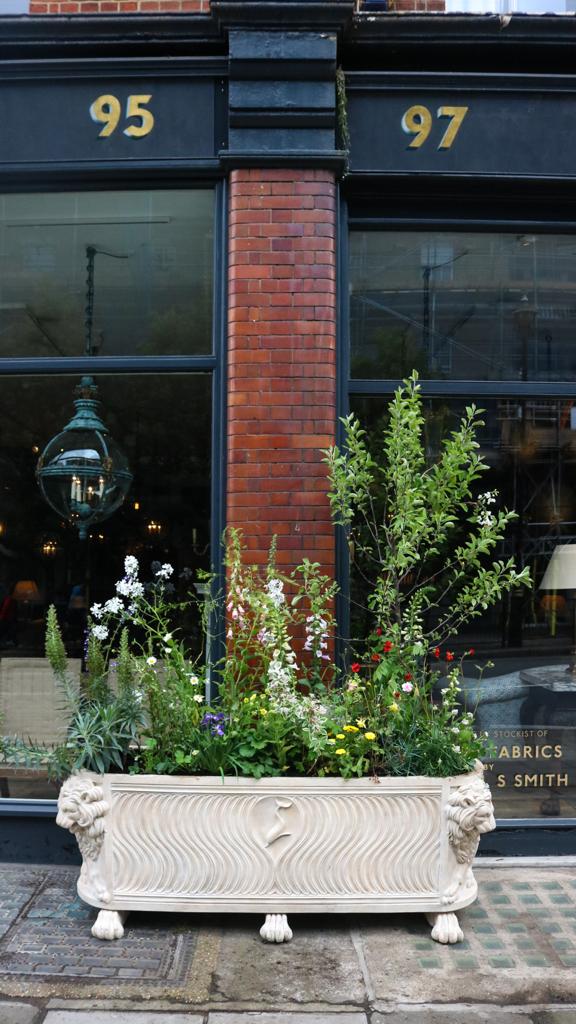
A large cistern by Coade Ltd inspired by Roman imperial marble strigillated Lion Sarcophagi from 3rd century A.D.
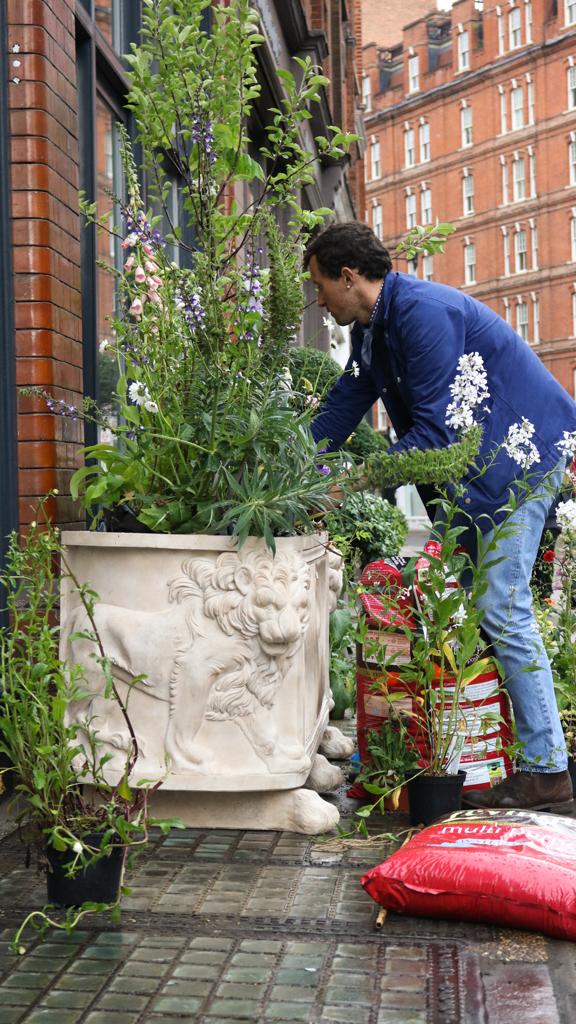
The strigillated panel features a dolphin in the centre.
We are delighted this year to mark the occasion with an exquisite Coade Ltd Lion Cistern, that took seven and a half months in the making, which florist designer Charlie Mccormick has used as a planter to create a magical English country house garden. We were very honoured that Charlie gave us his time to create something so beautiful. His magical mastery of floristry combined with the sublime craftsmanship of Coade is a total delight. Sweet smelling apple blossom, asparagus fronds, and a patchwork of wild flowers are held within the approximately two metre long Coade stone cistern. While Charlie’s husband, Ben Pentreath languished on our reproduction Howard and Sons sofa last Sunday, Charlie set to work conjuring up the most beautiful display.
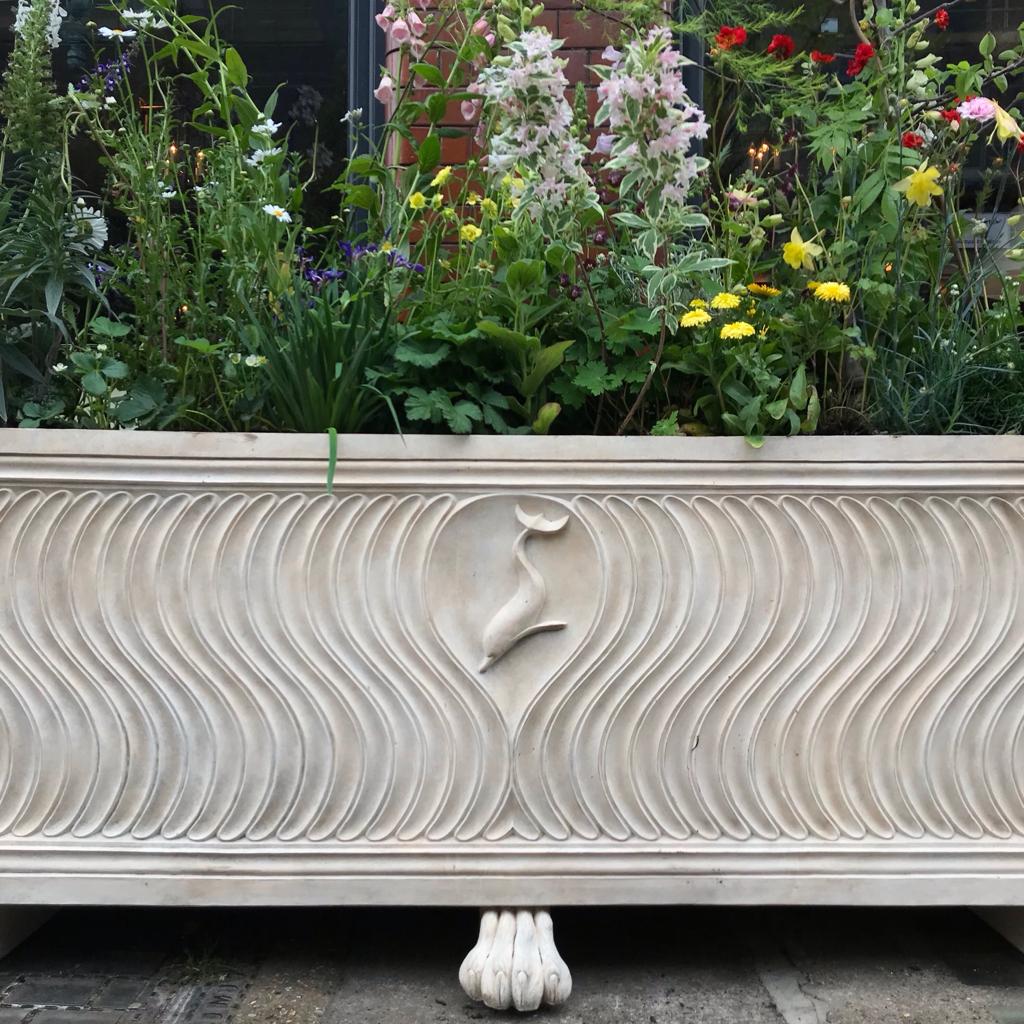
Upon the unveiling of the tremendous sculptural work of art, our friend Christopher from Robert Kime when walking past, exclaimed ‘I thought the recipe for Coade died along with its 18th Century founder Eleanor Coade?! It did. But Steve Pettifer, the founder of Coade Ltd, passionately and relentlessly worked for ten years to rediscover the recipe to the clay stoneware formula.
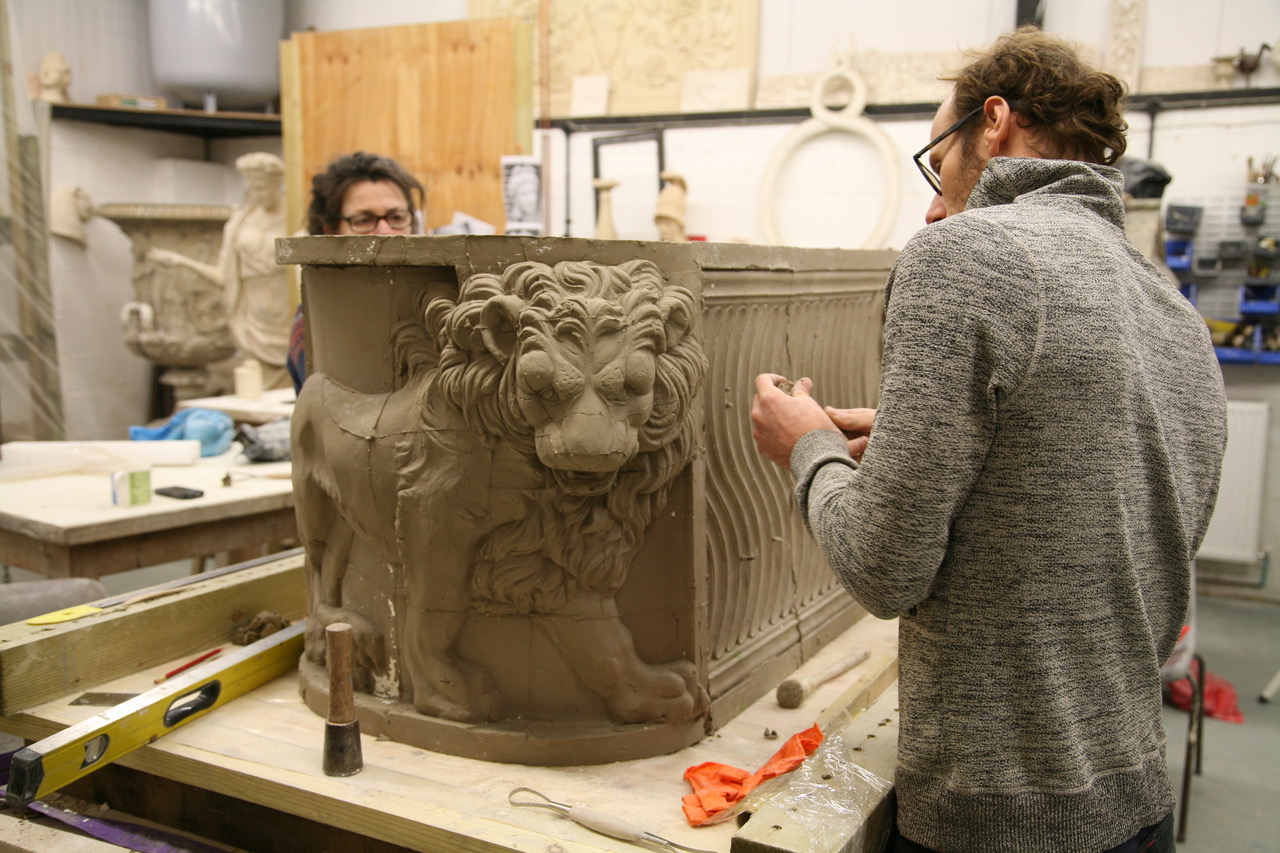
The process of craftsmanship, making a cistern of this scale with such intricate crafting is complicated and painstakingly long. A journey of tremendous skill, knowledge and passion. The cistern took two weeks to research and design. Two months to sculpt, using the 18th Century technique. A further two weeks to mould in plaster, followed by two months of further sculpting with the Coade clay mix. It took two months to dry, then everyone at Coade held their breath for a trepidatious week to see if it would survive the kiln firing process, and lastly a week to patinate. The cistern shrinks by ten per cent while it drys over a period of two months. and it has to sit on rollers so that it doesn’t ever crack or split.
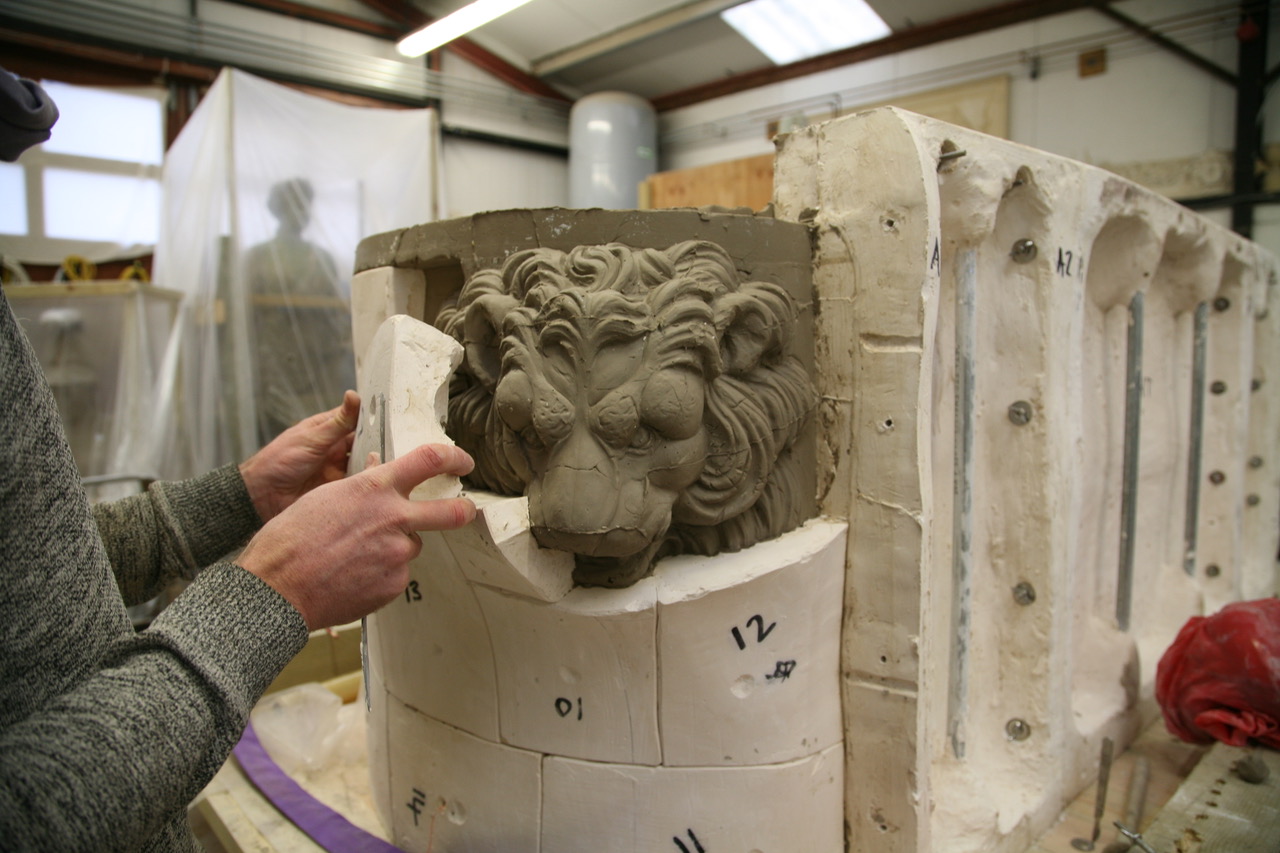
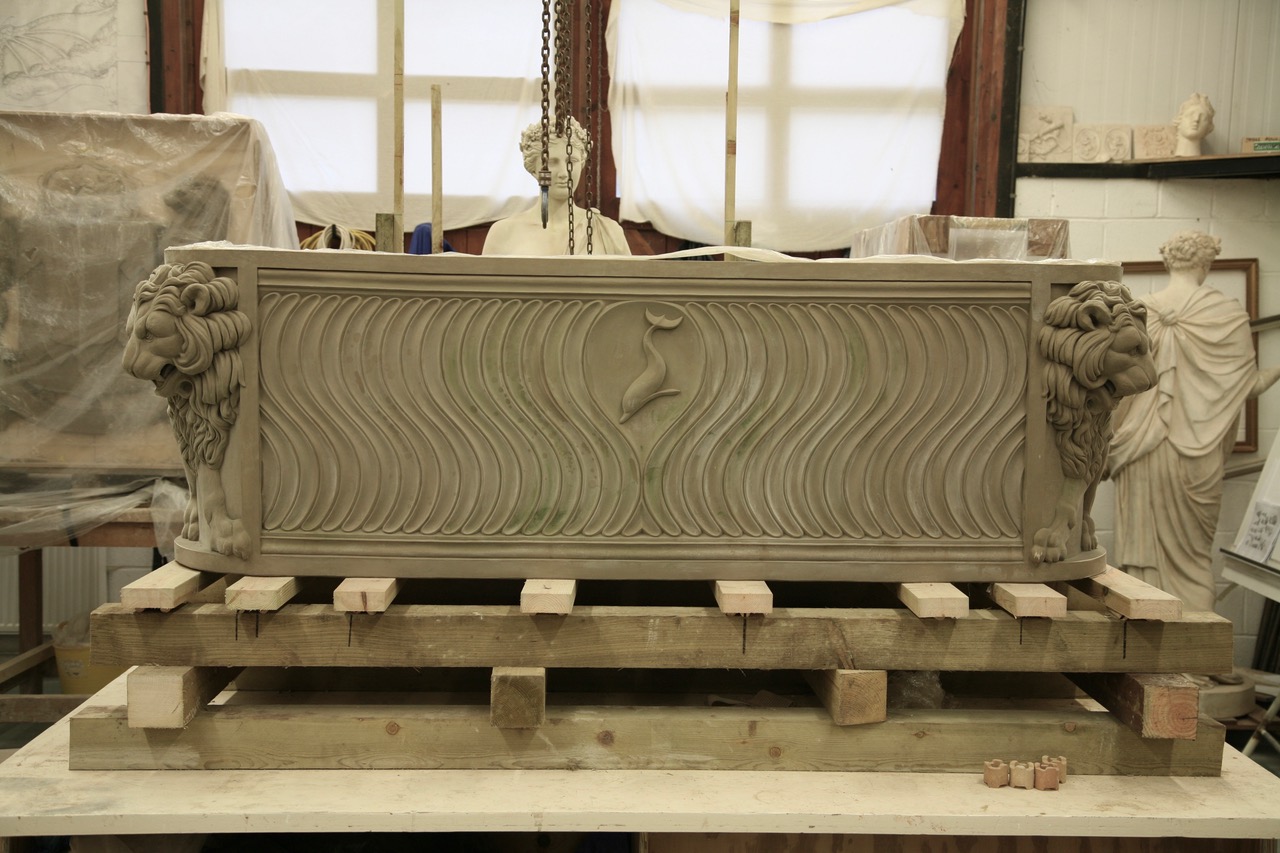
The dolphin spitter is inspired by the marble dolphins of the “Fontana Del Tritone” of 1642/3 by Gian Lorenzo Bernini in Rome. The strigillated panel features a dolphin in the centre. The “Strigil” was a metal tool used, especially by athletes in Ancient Rome, to clean the body after being doused with oil. It had the form of a concave, curved blade, a shape recalled by the S form of the spiral fluting.
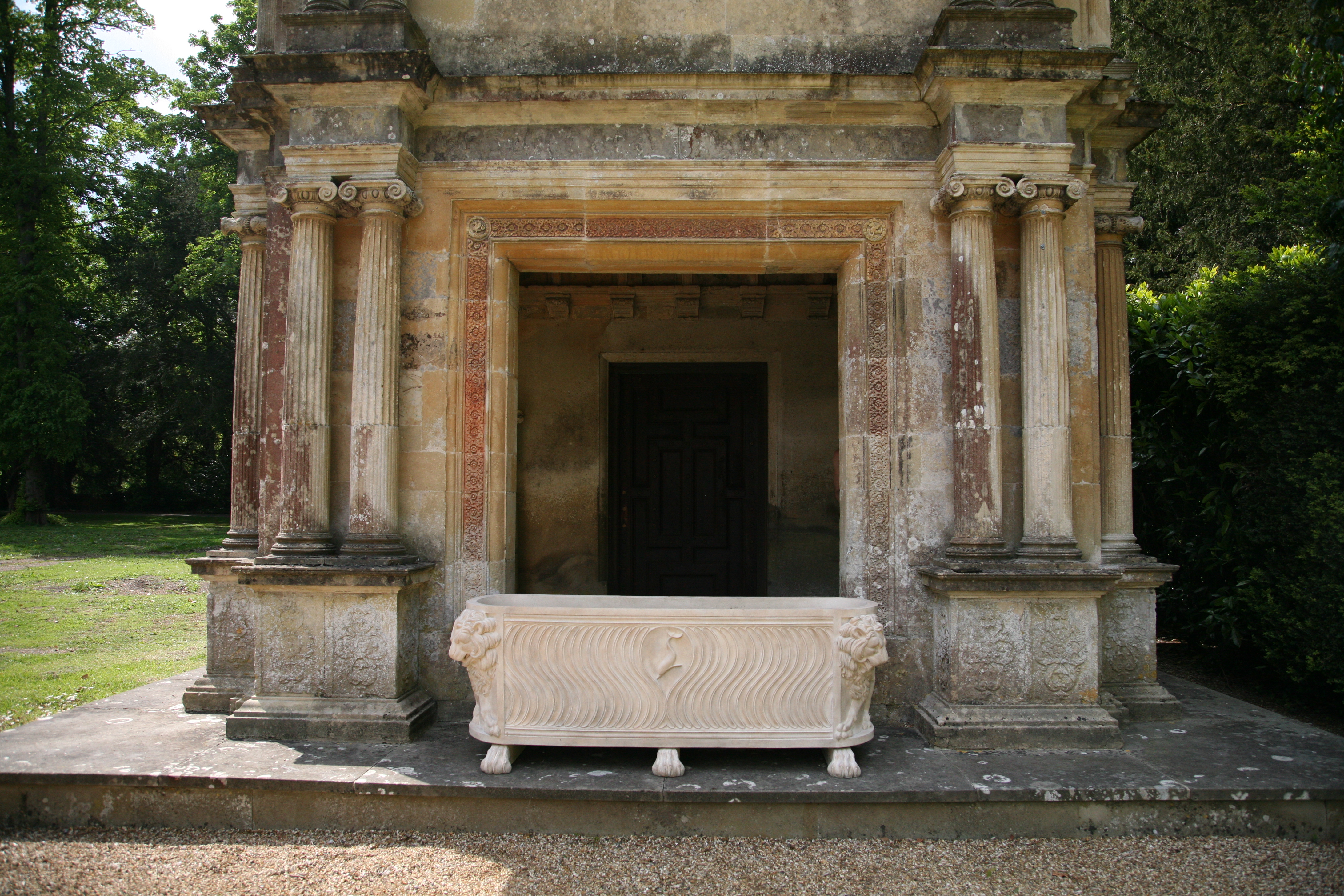
The Coade urn rests for a while before its journey to London within the 16th Century Holbein Porch of Wilton house.
Steve works alongside his hugely talented team: Alasdair Rennie, Hannah Hartwell and Will Whitmore, amongst the inspiring environment of Wilton house estate. Wilton has one of the largest sculpture collections in Europe which includes the Mazarin collection of Sculpture once owned by Cardinal Richelieu in the 17th Century. As well as creating pieces inspired from these works of art, the team also works on the restoration of the ancient sculptures.
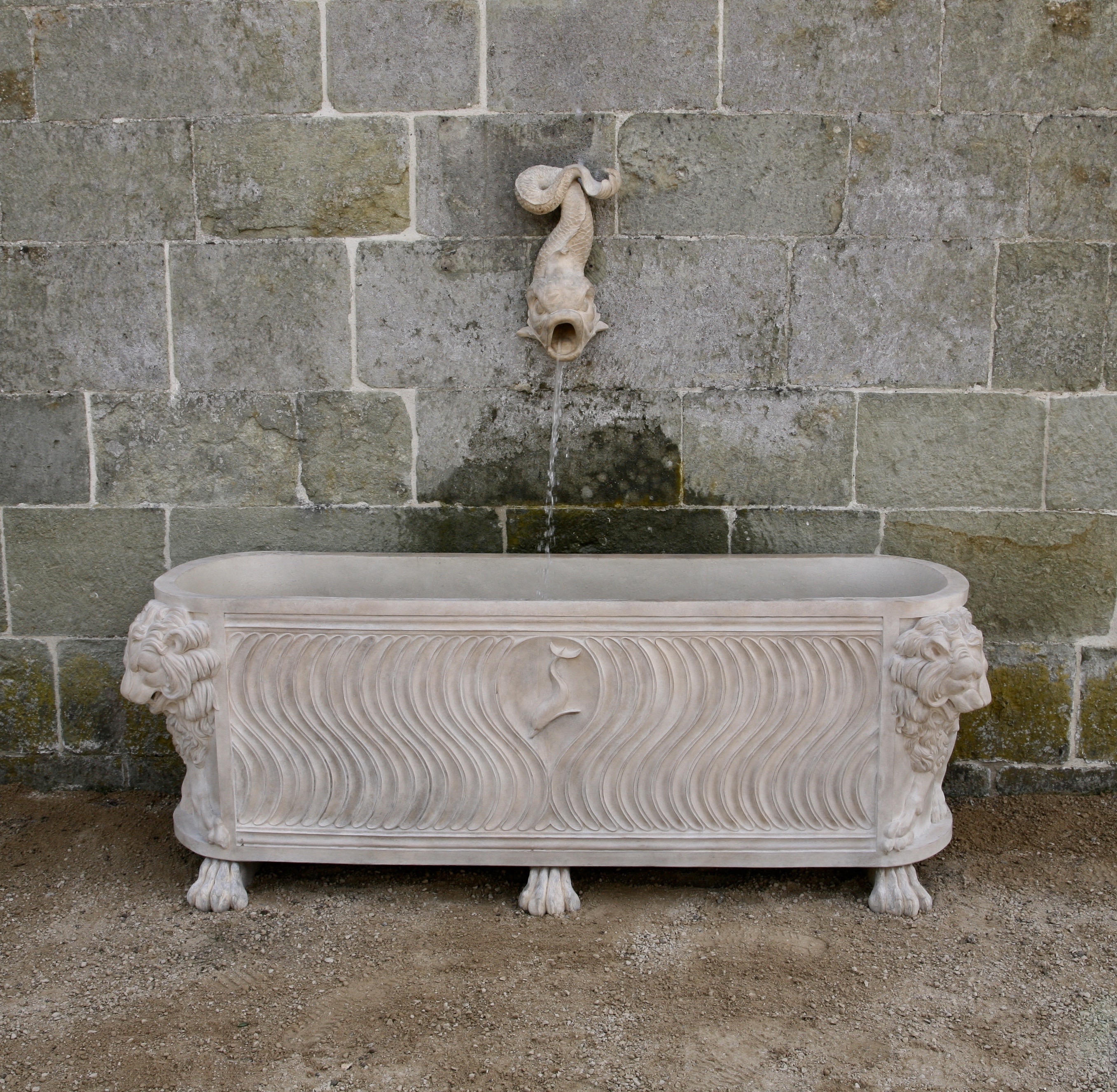
One of the striking features of Coade stone, is its ability to be moulded into intricate and complex shapes in large scale formations, as well as its high resistance to weathering. The composite recipe is much more resilient than most types of stone in London. Original Coade sculptures stand as strong as the day they were positioned in 18th and 19th Century London.
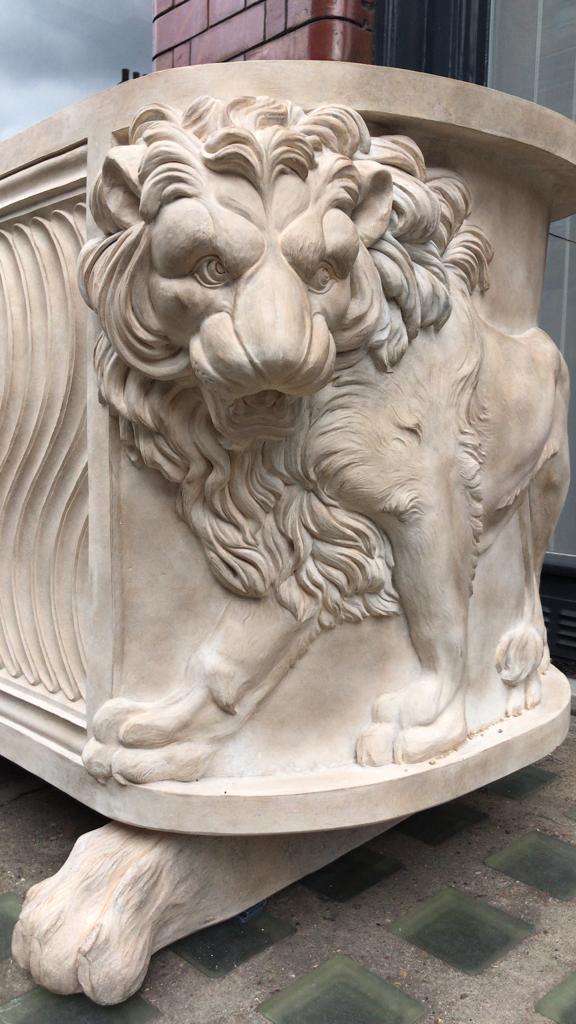
The Lions symbolise courage and protection.
These include Lion sculptures, notably the South Bank Lion, at the end of Westminster Bridge which stands as a symbol of courage and perseverance. Originally it was one of a pair that stood on top of the Red Lion Brewery, a once-familiar London landmark where the Royal Festival Hall now stands. However when the brewery has to be demolished in 1949 following a fire in 1931, King George VI instructed that the lions be saved to symbolise the bravery and resilience of Londoners during the First and Second World Wars. The second Lion is located at a gate of Twickenham stadium painted gold.
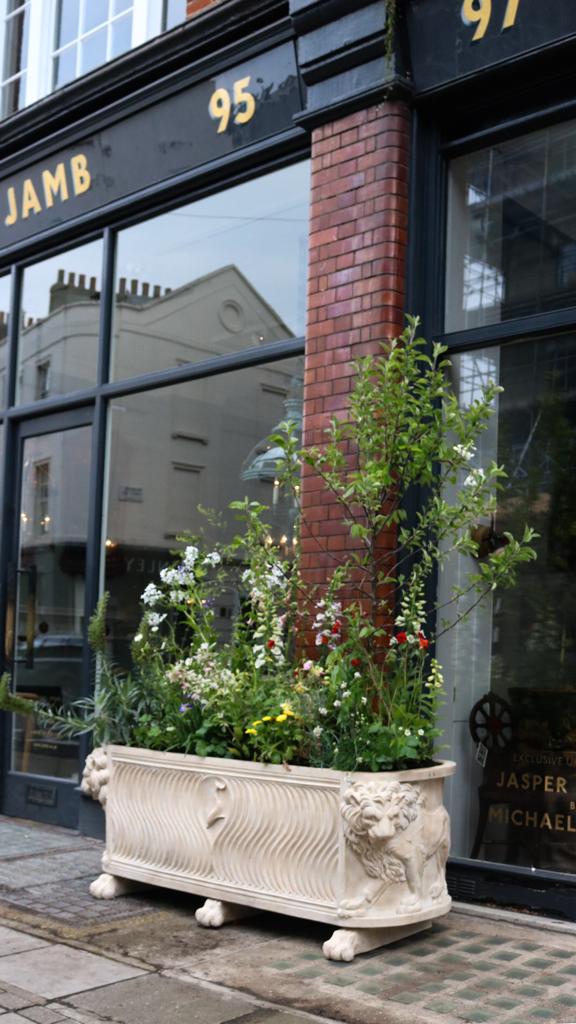
In 2017 a rare example of Roman sarcophagi was excavated in Southwark, London, which was part of a large Roman cemetery. It was exhibited last year at the Museum of London. Unfortunately I missed it but how lucky I feel to have our own example of ancient Rome sculpture outside the door of our own showroom. I feel so proud that we are able to represent Coade Ltd at Jamb: such exquisite and skilled craftsmen creating extraordinary sculptural works of art.



